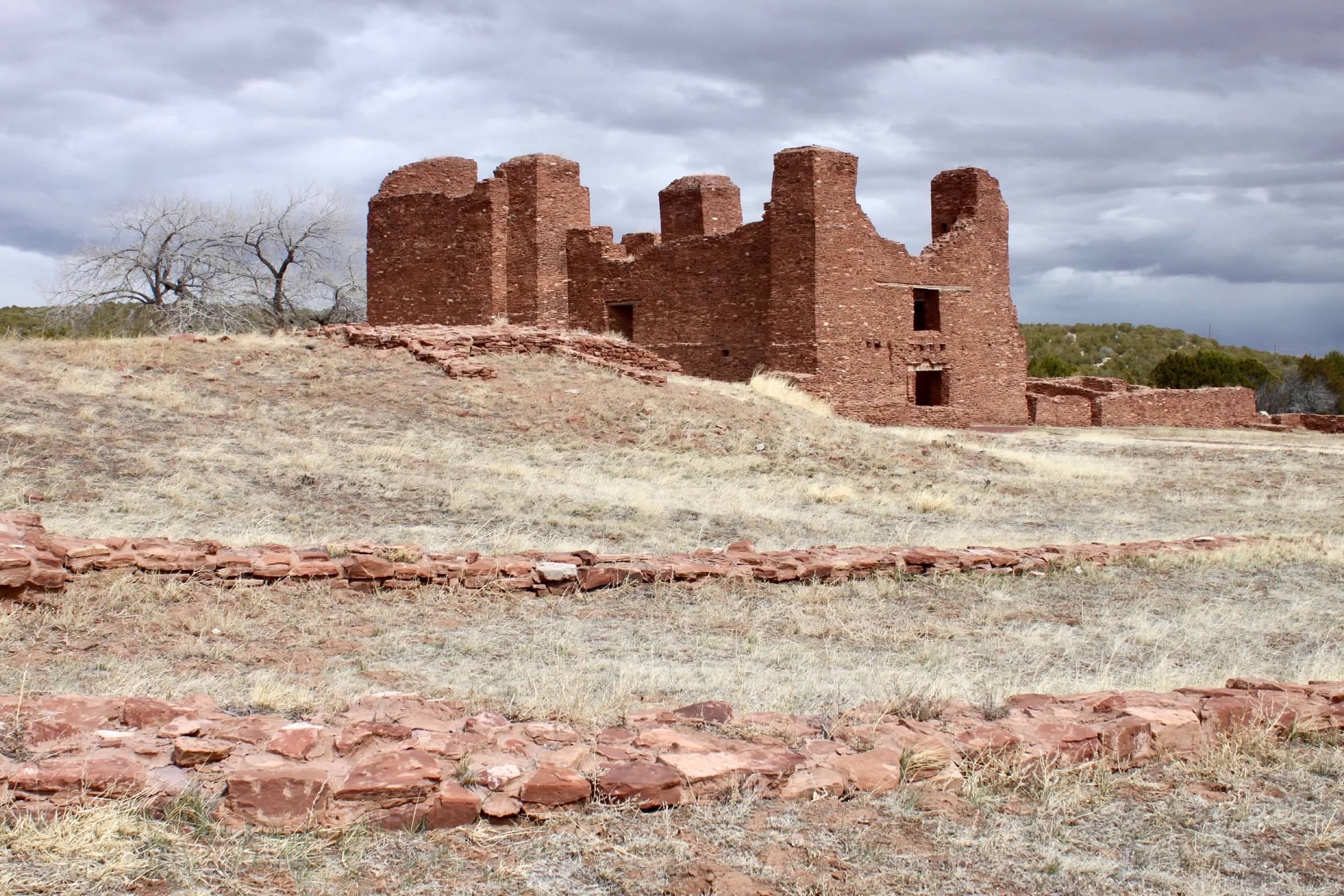
Salinas Pueblo Missions is a unique park. It is comprised of three separate sites: Gran Quivira, Abó, and Quarai. Each site has its own pueblos, Spanish mission, and other ruins. The sites are all nicely preserved. The monument’s visitor center is centrally located between the three sites in Mountainair, New Mexico. The park was originally established as Gran Quivira National Monument in 1909. At that time, Abó and Quarai were New Mexico state monuments. New Mexico transferred ownership of Abó and Quarai to the federal government in 1980. In 1981, the National Park Service expanded the national monument to include all three sites and renamed it Salinas Pueblo Missions National Monument.

History of the Missions
When Francisco Coronado explored central New Mexico for Spain in 1540, he found thriving communities of Pueblo people at each of these three sites. The Spanish returned to colonize New Mexico and convert the Native Americans to Christianity in 1598. Colonization was economically impractical, and the process led to government corruption and a class system that divided Native Americans which resulted in the decline of all three communities.

Raids by Apaches and drought furthered the decline. Each community was depopulated by the 1670s. Ranchers began settling in the area in the early 1800s. By the late 1800s, momentum to excavate and preserve the ruins began to grow leading to the establishment of Gran Quivira National Monument in 1909.

Visiting the Sites
As an afternoon day trip from Albuquerque, we visited Quarai, the visitor’s center in Mountainair, and Abó. The sites are all dog friendly, and our dog Liberty loved exploring the easy trails through the ruins. Leashed dogs are welcomed on the trails and in the picnic areas.
Quarai
Thanks to Quarai’s more remote location, we had this site all to ourselves. Quarai Mission and Convento was established in 1626 by Fray Juan Gutierrez de la Chica. The convento features a rare square kiva. We really enjoyed the Quarai site. It is easy to imagine what the church looked like during the 1600s and walking through the maze of ruins, once the convento, was interesting. The windows between rooms make for fun photos.


Abó
Be careful following directions from a map app on the way to Abó from Mountainair. Our app had us turn way too early! The actual turn is just past the state historical marker for the Abó ruins. In contrast to Quarai, Abó was much busier, likely due to its location near Interstate 25.

Abó Mission and Convento was established in 1622 by Fray Francisco Fonte. The church was renovated and enlarged by Fray Francisco Acevedo in 1640, but the site was ultimately abandoned in 1673. Spanish sheep herders returned in 1815. They built the Reoccupation Plazuela – a fortified ranch house located just south of the main ruins.

Worth noting, if you need to use the restroom, Quarari or the Mountainair visitors center are the best options because of their flushing toilets and running water. Abó only has two pit toilets. It does have an impressive picnic area though. We really enjoyed exploring this lesser known national monument and learning more about New Mexico’s Native American history.

Visiting nearby Bandelier National Monument as well? Check out our Bandelier blog!
Click here for more Land of Liberty Explorers!
Like this page? Pin it on Pinterest or share it on Facebook!



